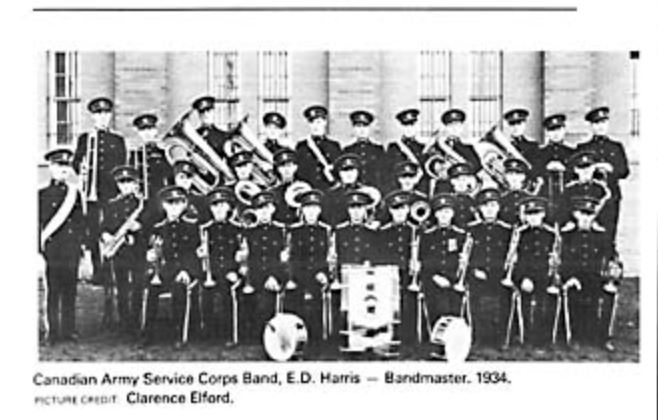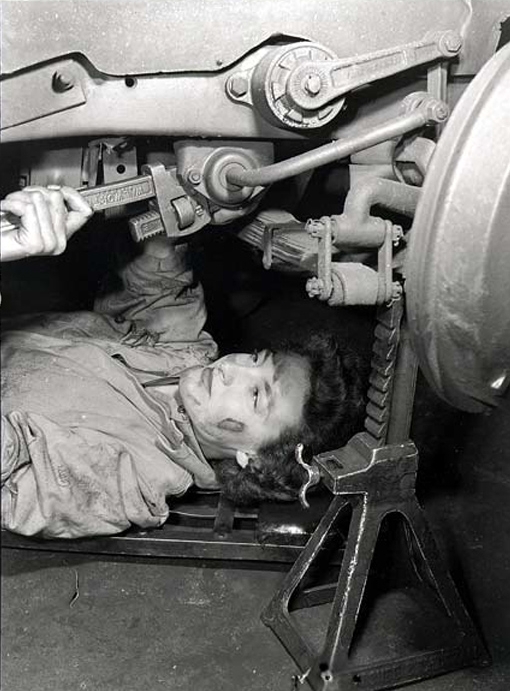|
Ellen Webber
Ellen Douglas "Dougie" Webber, (October 10, 1926 – April 6, 2003) was a Canadian politician and lawyer. She served as an alderman on Ottawa City Council from 1961 to 1962 and on the Ottawa Board of Control from 1963 to 1969. She was the second woman ever to be elected to the city's Board of Control. Early life Webber was born October 10, 1926, in Bruno, Saskatchewan, the daughter of Joseph W. MacDondald, a Charlottetown-based lawyer and Charlotte Hughes. She came from a family involved in Liberal Party politics on Prince Edward Island. Her grandfather was James Joseph Hughes, an MP and Senator, and her uncle William Wade Hughes was a provincial cabinet minister. Webber grew up in Ottawa, Prince Edward Island and Newfoundland. Webber attended Saint Dunstan's University for a year prior to joining the Canadian Women's Army Corps (CWAC) during World War II, where she was stationed at Kitchener and Ottawa, and achieving the rank of corporal. After 10 months with the CWAC, she ... [...More Info...] [...Related Items...] OR: [Wikipedia] [Google] [Baidu] |
Charlottetown
Charlottetown is the capital and largest city of the Canadian province of Prince Edward Island, and the county seat of Queens County. Named after Queen Charlotte, Charlottetown was an unincorporated town until it was incorporated as a city in 1855. It was the site of the famous Charlottetown Conference in 1864, the first gathering of Canadian and Maritime statesmen to discuss the proposed Maritime Union. This conference led, instead, to the union of British North American colonies in 1867, which was the beginning of the Canadian confederation. PEI, however, did not join Confederation until 1873. From this, the city adopted as its motto ''Cunabula Foederis'', "Birthplace of Confederation". The population of Charlottetown is estimated to be 40,500 (2022); this forms the centre of a census agglomeration of 83,063 (2021), which is roughly half of the province's population (160,302). History Early history (1720–1900) The first European settlers in the area were French; perso ... [...More Info...] [...Related Items...] OR: [Wikipedia] [Google] [Baidu] |
1960 Ottawa Municipal Election
The city of Ottawa, Canada held municipal elections on December 5, 1960. Former mayor Charlotte Whitton returns to the mayoral chair, defeating controller and owner of the Ottawa Rough Riders, Sam Berger. Mayor of Ottawa Referendums Ottawa Board of Control (4 elected) City council A municipal council is the legislative body of a municipality or local government area. Depending on the location and classification of the municipality it may be known as a city council, town council, town board, community council, rural counc ... (2 elected from each ward) References *''Ottawa Journal, December 6, 1960'' {{Ottawa elections Municipal elections in Ottawa Ottawa municipal election Municipal election, 1960 Ottawa municipal election Ottawa municipal election ... [...More Info...] [...Related Items...] OR: [Wikipedia] [Google] [Baidu] |
Central Mortgage And Housing Corporation
Canada Mortgage and Housing Corporation (CMHC) (french: Société canadienne d'hypothèques et de logement) (SCHL) is Canada's national housing agency, and state-owned mortgage insurer. It was originally established after World War II, to help returning war veterans find housing, and is a wholly-owned Crown Corporation of the Government of Canada. Since then, it has seen its mandate expand to the mandate of improving access to housing, including owned and rental. About The CMHC operates with a primary mandate of providing mortgage liquidity, assist in establishing affordable housing development, and provide arms-length advice to the Government of Canada, and housing industry. Despite the claim of independence, the Crown Corp acts as Canada's national housing agency. As such, it administers Federal housing programs such as the First-time home buyer loan, acts as a mortgage insurer (primarily for high-leverage loans), and provides housing research. The agency's governance is ... [...More Info...] [...Related Items...] OR: [Wikipedia] [Google] [Baidu] |
Halifax, Nova Scotia
Halifax is the capital and largest municipality of the Canadian province of Nova Scotia, and the largest municipality in Atlantic Canada. As of the 2021 Census, the municipal population was 439,819, with 348,634 people in its urban area. The regional municipality consists of four former municipalities that were amalgamated in 1996: Halifax, Dartmouth, Bedford, and Halifax County. Halifax is a major economic centre in Atlantic Canada, with a large concentration of government services and private sector companies. Major employers and economic generators include the Department of National Defence, Dalhousie University, Nova Scotia Health Authority, Saint Mary's University, the Halifax Shipyard, various levels of government, and the Port of Halifax. Agriculture, fishing, mining, forestry, and natural gas extraction are major resource industries found in the rural areas of the municipality. History Halifax is located within ''Miꞌkmaꞌki'' the traditional ancestral lands ... [...More Info...] [...Related Items...] OR: [Wikipedia] [Google] [Baidu] |
Dalhousie Law School
, mottoeng = "Law is the source of light" , endowment = , staff = , faculty = 119 , dean = Camille Cameron , head_label = , head = , doctoral = , students = 500 , city = Halifax , province = Nova Scotia , country = Canada , campus = Urban , parent = Dalhousie University , free_label = , free = , colours = Black and Gold , mascot = , nickname = Dal Law , website law.dal.ca , logo= The Schulich School of Law is the law school of Dalhousie University in Halifax, Nova Scotia, Canada. Founded in 1883 as Dalhousie Law School, it is the oldest university-based common law school in Canada. It adopted its current name in October 2009 after receiving a $20-million endowment from Canadian businessman and philanthropist Seymour Schulich. Today, the Schulich School of Law is the largest law school in Atlantic Canada. Wi ... [...More Info...] [...Related Items...] OR: [Wikipedia] [Google] [Baidu] |
Dalhousie University
Dalhousie University (commonly known as Dal) is a large public research university in Nova Scotia Nova Scotia ( ; ; ) is one of the thirteen provinces and territories of Canada. It is one of the three Maritime provinces and one of the four Atlantic provinces. Nova Scotia is Latin for "New Scotland". Most of the population are native Eng ..., Canada, with three campuses in Halifax, a fourth in Bible Hill, Nova Scotia, Bible Hill, and a second medical school campus in Saint John, New Brunswick. Dalhousie offers more than 4,000 courses, and over 200 degree programs in 13 undergraduate, graduate, and professional faculties. The university is a member of the U15 Group of Canadian Research Universities, U15, a group of research-intensive universities in Canada. The institution was established as ''Dalhousie College'', a nonsectarian institution established in 1818 by the eponymous Lieutenant Governor of Nova Scotia, George Ramsay, 9th Earl of Dalhousie, with education reforme ... [...More Info...] [...Related Items...] OR: [Wikipedia] [Google] [Baidu] |
Royal Canadian Army Service Corps
The Royal Canadian Army Service Corps (RCASC) was an administrative and transport corps of the Canadian Army. The Canadian Army Service Corps was established in the Non-Permanent Active Militia in 1901 and in the Permanent Active Militia in 1903. The Canadian Permanent Army Service Corps was redesignated The Royal Canadian Army Service Corps on 3 Nov 1919. History The RCASC was established by General Order No. 141, as the Canadian Army Service Corps (CASC), on November 1, 1901. The CASC was modelled directly off the British Army Service Corps to provide all transportation and supply services to the Army. Initially, the CASC consisted of four companies to support the Active Militia units (No. 1 at London, No. 2 at Toronto, No. 3 at Kingston and No. 4 at Montreal). The Permanent Component of the CASC was created under General Order 21 of December 1903 and the corps grew quickly, doubling the number of units by 1903, and growing by another three companies by 1905. By the summer of ... [...More Info...] [...Related Items...] OR: [Wikipedia] [Google] [Baidu] |
Kitchener, Ontario
) , image_flag = Flag of Kitchener, Ontario.svg , image_seal = Seal of Kitchener, Canada.svg , image_shield=Coat of arms of Kitchener, Canada.svg , image_blank_emblem = Logo of Kitchener, Ontario.svg , blank_emblem_type = Logo , blank_emblem_size = 100x90px , image_map = , map_caption = , pushpin_map = Canada#Canada Southern Ontario#CAN ON Waterloo , pushpin_map_caption = , subdivision_type = Countries of the world, Country , subdivision_type1 = Provinces and territories of Canada, Province , subdivision_name = Canada , subdivision_name1 = Ontario , subdivision_type2 = Census divisions of Ontario, Region , subdivision_name2 = Regional Municipality of Waterloo, Waterloo , leader_title = Mayor , leader_name = Berry Vrbanovic , leader_title2 = Governing Body , leader_name2 = Kitchener City Council , established_title = Found ... [...More Info...] [...Related Items...] OR: [Wikipedia] [Google] [Baidu] |
World War II
World War II or the Second World War, often abbreviated as WWII or WW2, was a world war that lasted from 1939 to 1945. It involved the vast majority of the world's countries—including all of the great powers—forming two opposing military alliances: the Allies and the Axis powers. World War II was a total war that directly involved more than 100 million personnel from more than 30 countries. The major participants in the war threw their entire economic, industrial, and scientific capabilities behind the war effort, blurring the distinction between civilian and military resources. Aircraft played a major role in the conflict, enabling the strategic bombing of population centres and deploying the only two nuclear weapons ever used in war. World War II was by far the deadliest conflict in human history; it resulted in 70 to 85 million fatalities, mostly among civilians. Tens of millions died due to genocides (including the Holocaust), starvation, ma ... [...More Info...] [...Related Items...] OR: [Wikipedia] [Google] [Baidu] |
Canadian Women's Army Corps
The Canadian Women's Army Corps was a non-combatant branch of the Canadian Army for women, established during the Second World War, with the purpose of releasing men from those non-combatant roles in the Canadian armed forces as part of expanding Canada's war effort. Most women served in Canada but some served overseas, most in roles such as secretaries, mechanics, cooks and so on. The CWAC was finally abolished as a separate corps in 1964 when women were fully integrated into the Canadian armed forces. The headquarters of the CWAC was based in Goodwin House in Ottawa. History The Canadian Women's Army Corps (CWAC) was authorized on 13 August 1941, in response to a shortage of personnel caused by the increase in the size of Canada's navy, army and air force. The founding driving force to the unit's creation was Mrs. Joan Kennedy, of Victoria, British Columbia. She initially faced a great deal of opposition from conventional (male) military authorities. One senior army off ... [...More Info...] [...Related Items...] OR: [Wikipedia] [Google] [Baidu] |
Saint Dunstan's University
:''St. Andrew's College, Prince Edward Island'' redirects to here. St. Dunstan's University (SDU) is a former university which was located on the northern outskirts of Charlottetown, Prince Edward Island, Canada. SDU merged with Prince of Wales College (PWC) in 1969 to form the University of Prince Edward Island. St. Dunstan's College was founded by the Roman Catholic Diocese of Charlottetown on January 15, 1855 as a seminary which trained young men for the Catholic clergy. The St. Andrew's College, founded in 1831, was its predecessor. By the mid-20th century, the college had expanded into a small liberal arts university. A post-Second World War enrollment boom mandated an expansion which saw new residences and teaching buildings constructed on the campus located along Charlottetown's Elm Avenue (the Malpeque Road). SDU received a provincial degree-granting charter in 1917 but didn't actually award its first bachelor's degrees until the spring 1941 convocation. SDU had former ... [...More Info...] [...Related Items...] OR: [Wikipedia] [Google] [Baidu] |








